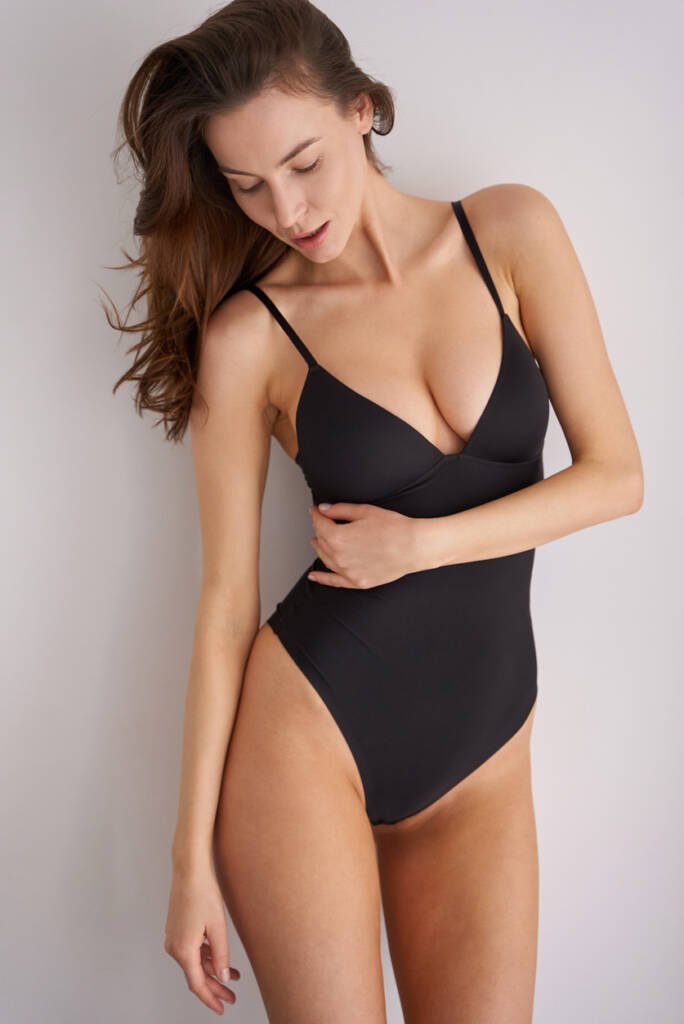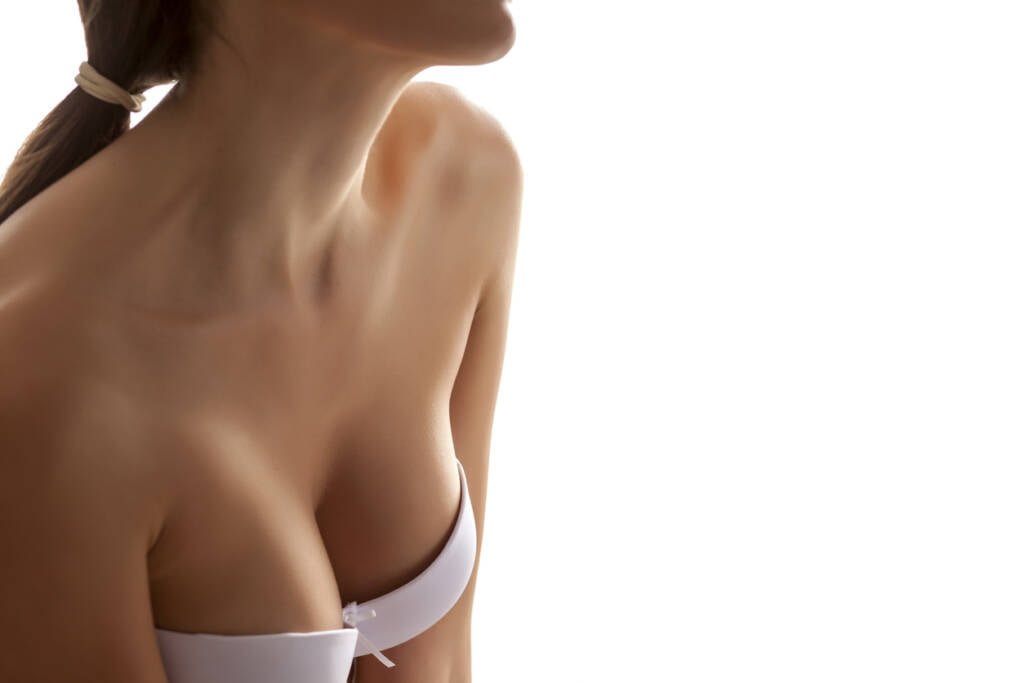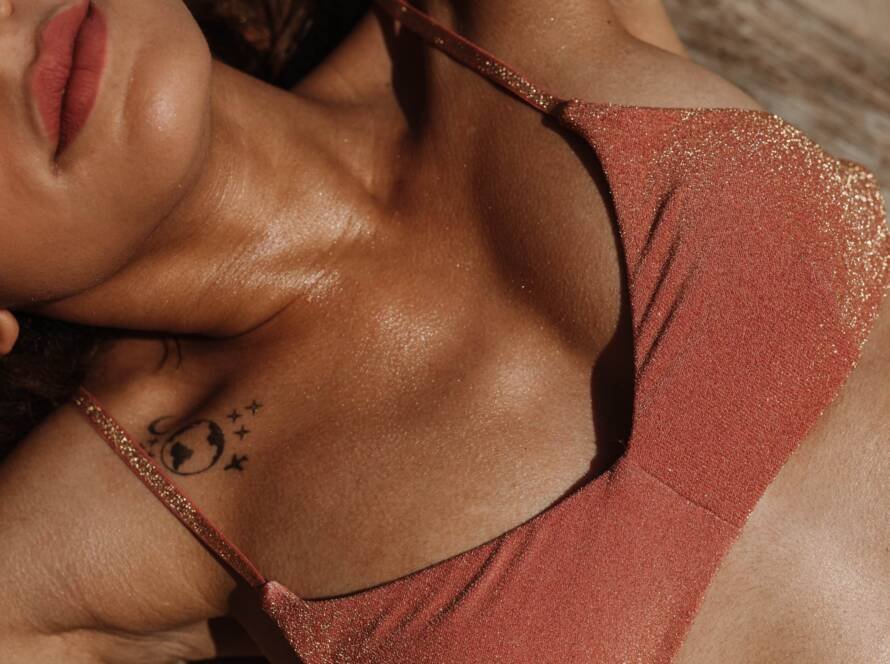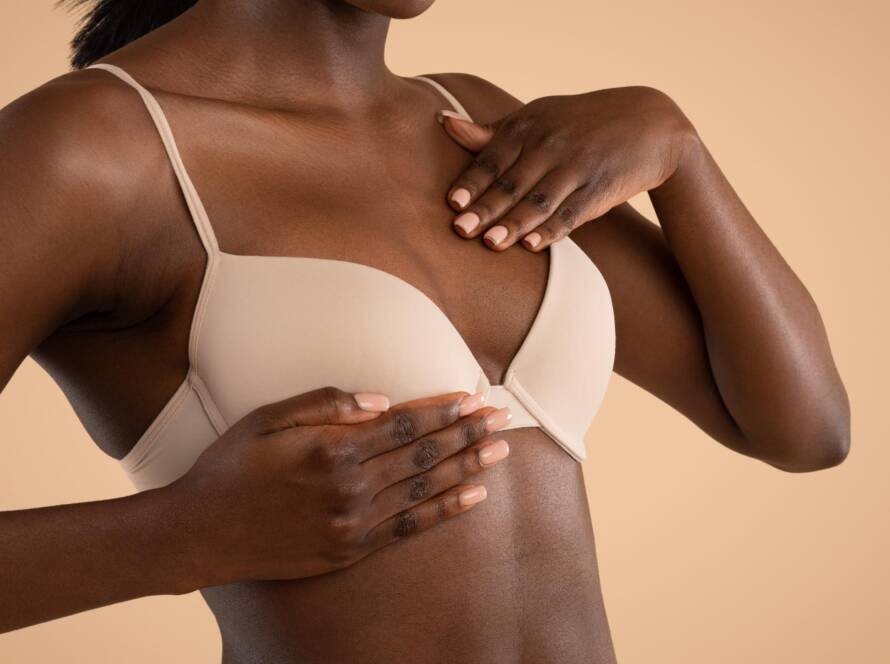Miami is a global destination for plastic surgery, with breast augmentations being one of the most sought after procedures. While traditional breast implants (silicone or saline) remain common options to increase breast size, more women are opting for a natural alternative: autologous fat transfer breast augmentation.
This minimally invasive technique uses a patient’s fat, harvested via liposuction, to enhance the breasts. While fat grafting has limitations on the maximum enlargement possible, it produces subtle, natural-looking results for many women unhappy with their small or uneven breasts.
What Is Fat Transfer Breast Augmentation?
Fat transfer breast augmentation, also known as natural breast augmentation, is an outpatient aesthetic procedure that enhances the natural form and volume of the breasts utilizing your own body fat. The fat cells are artfully harvested using liposculpture body contouring techniques to remove excess fat, most frequently from areas such as the abdomen, waist, and flanks.
The procedure provides a natural breast aesthetic, helping patients achieve shapelier breasts and a more harmonious, feminine physique.
Although more limited in the breast size increase compared to implant-based augmentation, fat transfer offers natural, long-lasting results. The transferred fat is your own, and thus ages gracefully within the surrounding breast tissue, reducing the need for subsequent revision procedures.
Dr. Bart Kachniarz is one of Miami’s top breast augmentation surgeon, with the skill set and latest technology to guide Miami patients in their transformation. Please contact us at 303-335-0369 to schedule your free in-depth consultation.
Who Is a Good Candidate?
Fat transfer breast augmentation helps restore lost volume by transferring unwanted fat, particularly to the upper aspects of the breast, which may have been lost following pregnancy or weight loss.
It also may help improve modest degrees of breast droopiness, or ptosis. In most cases, it is easily combined with a breast lift procedure or implants to correct greater degrees of ptosis or offer a more pronounced increase in breast size.
The surgical procedure enhances the fullness of the breasts, offers a more balanced feminine physique, and can serve as a transformational confidence boost for those with small breasts. Ideal candidates for this natural breast augmentation technique:
- Desire a modest and natural enhancement of breast volume
- Have minimal breast droopiness, or ptosis
- Have areas of excess fat tissue to harvest for the transfer
- Are non-smokers, or quit smoking at least 4 weeks prior to surgery
- Maintain a stable weight and good health
- If over the age of 40, are up-to-date on screening mammography to check for breast cancer
During your consultation, Dr. Kachniarz will review your medical history and guide you through all of your options, helping you decide whether breast augmentation is the right fit for your aesthetic desires.

Can You Combine a Fat Transfer With Implant Breast Augmentation?
Yes, in most cases you may supplement a fat transfer with implant-based breast augmentation and combine some of the benefits of each technique.
Breast implants do offer a more predictable and pronounced increase in size. When combined, it is more likely that they may be placed above the muscle, thus greatly reducing recovery time and increasing the lift effect of the procedure.
Implants placed above the muscle also preserve all pectoralis muscle function and minimize the risk of animation deformity. One of the major drawbacks of placing implants in this position is that they may be more visible or create “rippling” of the skin.
A transfer of fat above the implant may provide a more natural upper breast shape and help conceal the implant. Everyone’s body and lifestyle are different, and Dr. Kachnarz will guide you through all of your options during your complimentary consultation.
Can You Combine a Fat Transfer With a Breast Lift?
Yes, in many cases, you may combine a fat transfer breast augmentation with a breast lift procedure. This is a great option for patients who would like to address any droopiness, or ptosis, of the breast.
Although fat transfer alone does improve the shape and position of the nipple to a limited degree, adding a breast lift procedure may be necessary in cases of more pronounced ptosis to create a youthful breast shape. Ultimately, Dr. Kachniarz will help you decide on the best procedure for you during your complimentary consultation.
How Do You Maximize Survival of Fat Following Fat Transfer?
Dr. Kachniarz has a thorough understanding of factors that impact fat graft survival, and utilizes the latest technology to provide his patients with natural, long-lasting results. Factors that may improve fat cell survival include:
- reducing shear forces during harvest and transfer that may damage fat cells
- minimizing time between harvest and transfer
- purifying fat cells to minimize fluid volume and pressure within the breast
- distributing fat cells evenly throughout the breast
All fat is harvested carefully and purified using the REVOLVE fat purification system. The purified fat is then transferred artfully by hand. We never use “power-injectors” or pumps during fat injections to ensure you have the very best results possible. Lifestyle factors such as diet and exercise may impact fat cell resorption during the recovery period.
We generally recommend avoiding strenuous exercise and dietary plans that may increase fat metabolism for 6 weeks after surgery to ensure remaining fat cells survive. Our experienced team of plastic surgeons will discuss all strategies to optimize your long-term results prior to your breast surgery procedure.
Where Is Fat Transferred Within the Breast?
Depending on your individual anatomy, purified fat is generally transferred above the pectoralis muscle underneath the breast tissue, as well as within the subcutaneous plane between the breast tissue and skin.
Dr. Kachniarz first creates a foundation beneath the breast tissue to improve volume, a process analogous to breast implant placement.
Fat is then artfully transferred above the breast tissue, providing a youthful fullness to the upper and medial aspects of the breast. Fat transfer is generally avoided within the breast tissue itself to minimize disruption of native tissue and blood supply.

What To Expect on the Day of Your Surgery?
Our experienced team at Dr. K Miami Plastic Surgery will help guide you in preparation for your surgery. Your safety is a paramount priority, which is why all procedures are performed at an accredited ambulatory surgery center.
For procedures performed under general anesthesia, you will be asked to see your primary care doctor for an examination and obtain basic bloodwork.
If you are over the age of 40, you will be asked to obtain a screening mammogram. We will also have your Marena post surgical bra and any prescription medications ready prior to your procedure. Breast procedures generally take 3–4 hours, depending on the areas being liposculpted to remove fat.
You will recover from the procedure in the postoperative care unit and go home the same day. Dr. Kachniarz will call you the evening after your procedure to check in and answer any questions that may have come up. You will have 24/7 access to your surgeon following your procedure.
Recovery and Results
Recovery from surgery largely depends on the donor site areas undergoing liposculpture for fat harvest. You may have soreness for a few days, and some bruising that generally resolves within the first few weeks.
You should wear an abdominal compression garment for 4–6 weeks to reduce swelling in the area. As the transferred fat heals within the breast, you will be asked to avoid bras or other pressure to the breasts for up to 6 weeks.
We also recommend remaining physically active and following a healthy diet after your procedure, but do avoid any attempts to loose weight until your breasts are fully healed.
This reduces the degree of fat resorption following the transfer. Dr. Kachniarz will discuss all recovery considerations during your complimentary clinic visit.

How Long Does the Surgery Take?
On average, a breast augmentation procedure with implants takes approximately two hours, and that using your own fat takes approximately 3–4 hours depending on the areas undergoing liposculpture. Following the procedure, patients recover from anesthesia in the postoperative care unit and are discharged home the same day.
How Much Does a Fat Transfer to the Breasts Cost?
Fat transfer breast augmentation surgery in Miami costs approximately $5,000-$14,000.
You may schedule a complimentary consultation to obtain an individualized surgical quote. Surgical pricing is always all-inclusive; it includes the surgeon fees, facility and anesthesia fees, REVOLVE fat purification system, a Marena postsurgical garment, and a supplemental CosmetAssure insurance policy. We never charge hidden fees.
Is a Fat Transfer to the Breasts Painful?
Discomfort following fat transfer to the breasts tends to be significantly less than that following dual-plane breast augmentation. The procedure is designed to follow natural anatomic planes around the breast tissue without disruption of surrounding muscle.
As such, postoperative pain is generally limited to expected surgical-site tenderness and soreness within the liposculpted areas, which resolves over the course of a couple of weeks. Most fat transfer patients require minimal use of over-the-counter pain relievers during their recovery period.
Is Fat Transfer Safe?
Overall, fat transfer breast augmentation is a safe outpatient procedure with minimal downtime. As with any surgical procedure, there are inherent risks and benefits that you will discuss during your clinic consultation.
Your safety is of paramount importance, which is why all procedures are performed at accredited surgical facilities under the care of a board certified plastic surgeon and anesthesiologists. The procedure may also be performed while awake, if preferred, to further reduce potential risks associated with general anesthesia.

How Many Cup Sizes Can You Go up With a Fat Transfer to the Breasts?
Individual results vary greatly, but fat injections to the breasts may increase breast size by one cup on average, resulting in larger breasts. Cup size is not a standardized measure of breast volume, and varies greatly depending on band size and bra manufacturer.
As such, we focus on enhancing your physique and providing natural-looking results, rather than a specific cup-size increase. Several factors tend to increase the volume of fat that may be transferred safely to the breasts. These include the degree of skin laxity, and volume of existing breast tissue.
Additionally, factors such as diet and exercise may impact resorption rates of transferred fat cells during the recovery period. You will discuss your individual goals and strategies to optimize your results during your clinic consultation with Dr. Kachniarz.
How Much Fat Do You Need for a Fat Transfer Breast Augmentation?
On average, you need at least 500ml of fat cells for a fat transfer breast augmentation. Approximately 150-400ml of fat cells are generally transferred to each breast during the procedure. There are also some losses during the purification process, as damaged fat cells and any scar tissue is removed using the REVOLVE fat purification system.
Frequently Asked Questions
Can You Combine Procedures?
Yes, fat transfer breast augmentation is frequently combined with other aesthetic procedures. The two most common procedures performed at the time of augmentation are a breast lift and tummy tuck. You may discuss your individualized treatment plan with Dr. Kachniarz during your complementary consultation.
Can I Receive Another Surgery in the Future?
Yes, you may undergo breast fat transfer again in the future. Fat transfer to the breasts is designed to provide long-lasting results, but occasionally patients desire additional sessions to further increase breast fullness. One limitation with repeat fat transfer procedures is availability of fat donor tissue.
You will discuss your specific treatment plan with Dr. Kachniarz during your consultation. If your goal is to maximize breast volume with several sessions of fat transfer, we would strategically develop a liposculpting plan to provide adequate fat cells for each transfer session.
Does Breast Fat Transfer Require Any Incisions?
No, breast fat transfer does not require any incisions. Two needle-sized access points are used to transfer the fat cells to each breast. The access points are hidden carefully within the inframammary fold and within the skin-areola border. You will likely have several additional access points at the fat donor sites, depending on the areas being liposculpted.
How Long Will the Results Last?
One of the major benefits of fat transfer breast augmentation is that it provides natural, long-lasting results. Following the recovery period, the transferred fat cells generally stay within the breast permanently. They age gracefully and naturally with the surrounding breast over time, and tend to have a significantly lower need for revision compared to implant-based augmentation.
What if I Don’t Have Enough Fat for a Transfer?
If you don’t have enough body fat for a transfer, you may benefit from an implant breast augmentation. This may be done either alone, or in conjunction with a more modest fat transfer. In patients with limited excess fat, more areas may also be liposculpted to achieve the best fat transfer results.
Overall, you will develop an individualized treatment plan during your clinic consultation with Dr. Kachniarz.
Can Fat Transfer to the Breasts Cause Lumps?
One of the possible complications are breast lumps or calcifications. Dr. Kachniarz takes a number of precautions to minimize this risk. All fat transfers are performed artfully by hand, without the use of “power-injectors” or pumps. The fat is also transferred “retrograde” to evenly distribute it within the native breast.
References
[1] American Society of Plastic Surgeons. https://www.plasticsurgery.org/cosmetic-procedures/fat-transfer-breast-augmentation
[2] Cleveland Clinic. https://my.clevelandclinic.org/health/treatments/24033-fat-transfer-breast-augmentation
[3] PubMed. https://pubmed.ncbi.nlm.nih.gov/32097306/
[4] National Library of Medicine. https://www.ncbi.nlm.nih.gov/pmc/articles/PMC6181489/



